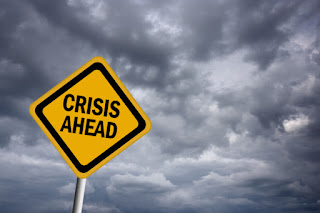Today in class, David and Colleen presented on crisis leadership. Crisis is defined as both "a time of intense difficultly, trouble, or danger" and "a time when a difficult or important decision must be made." Three types of crises were highlighted within their presentation including business/professional, PR, and personal. These three types of crises can overlap as well. David and Colleen outlined seven good leadership characteristics in times of crisis:
1. Don't allow emotions to get in the way
2. Don't take things personally
3. Keep a positive mental attitude
4. Keep composure
5. Respond decisively
6. Take accountability
7. Be communicative
Each of these characteristics really highlight how best to go about a crisis as a leader. Common mistakes that are made when leaders do not exemplify these leadership characteristics in a crisis include waiting to act, taking things personally, etc. We looked at some real world examples of these mistakes with President George Bush during 9/11 in waiting to act, and CEO Tony Hayward during the BP oil spill in taking things personally. We then did a few crisis leadership exercises to practice responding to crises in leadership positions. During the activity I got to role play both being CEO and being on the board in two different situations. I found the activity to be beneficial and enlightening. It really brought what David and Colleen taught about crisis leadership into practice. Leaders are often defined by their actions in times of crisis, which is why knowing how to act in a time of crisis and preparing for such events is so important.

I never knew this about George Bush on 9/11. Pretty interesting. I agree that the activities were really beneficial, they made us all stop and think and there wasn't always a perfectly clear answer to the questions being asked.
ReplyDeleteCase studies are really useful teaching tools because there are rarely simple answers. You guys did a good job engaging with the material.
ReplyDelete